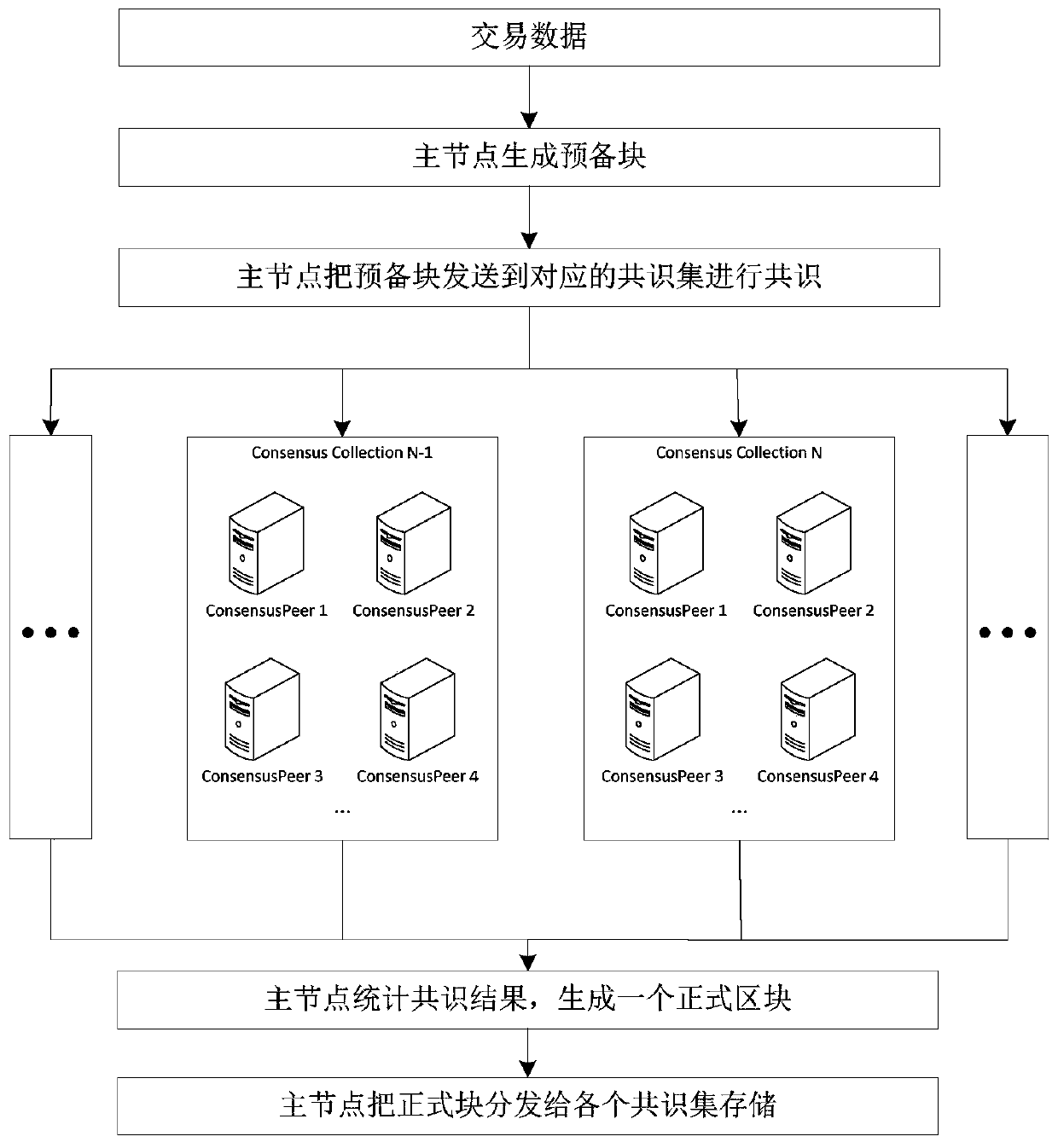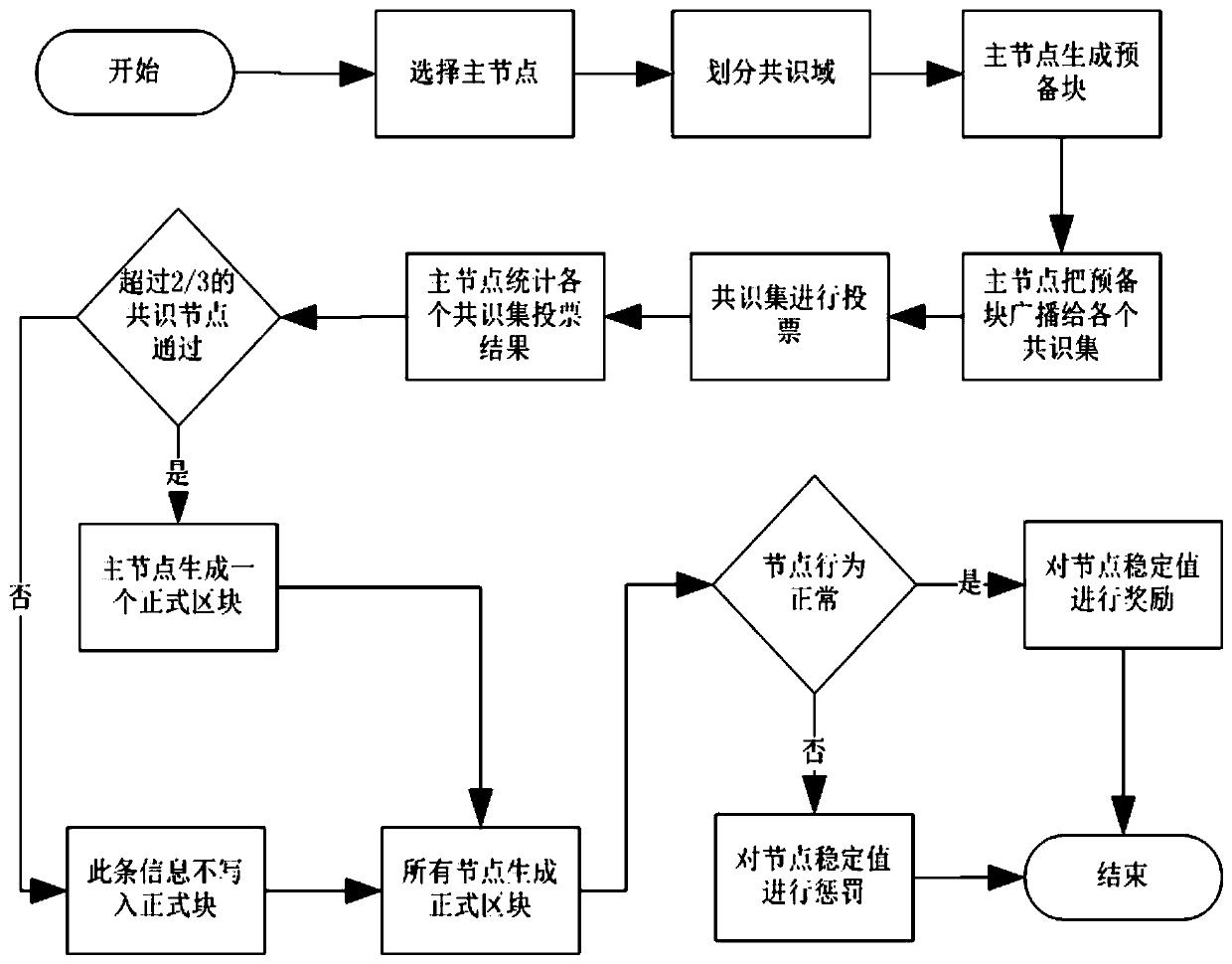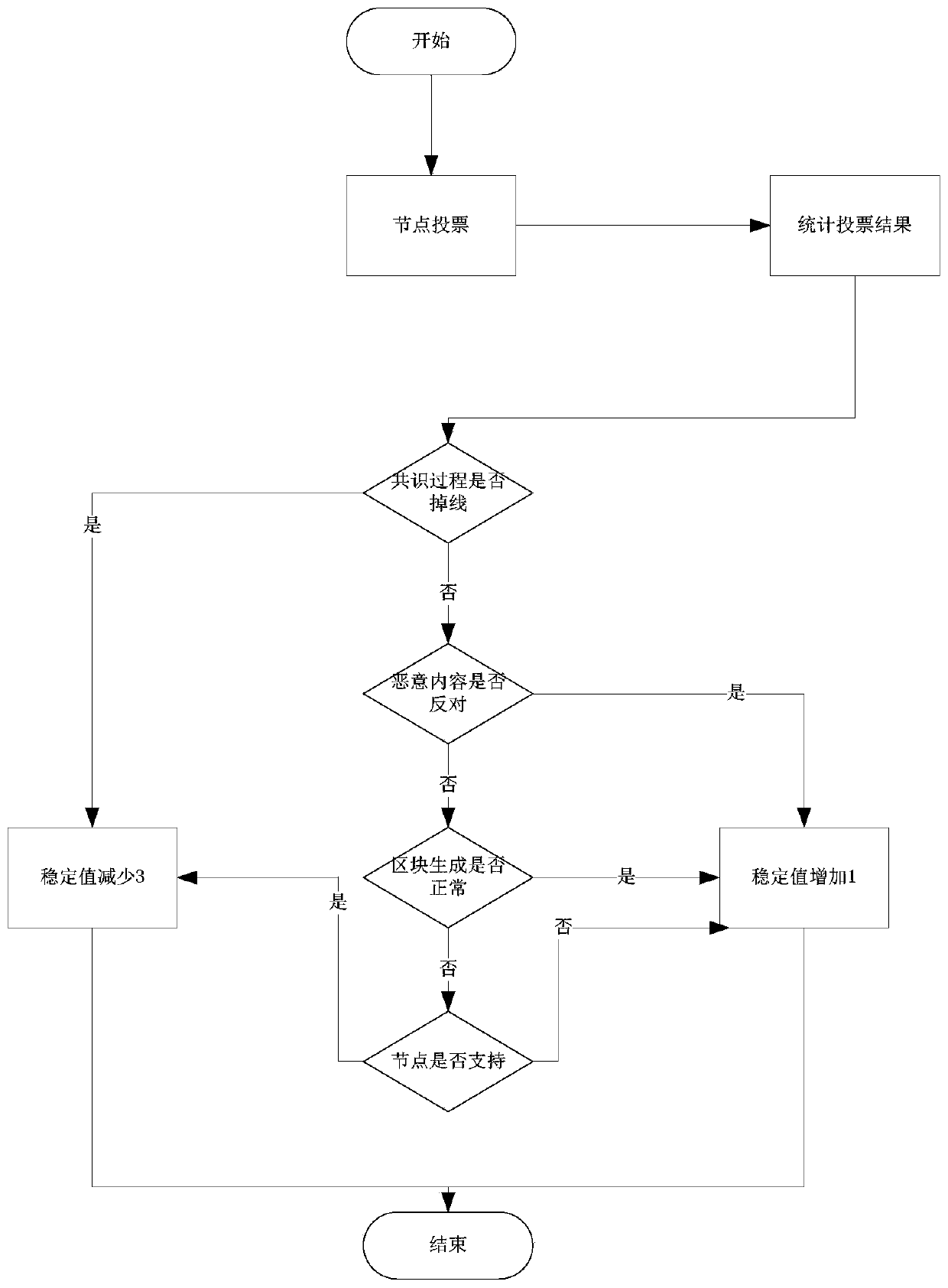Consensus resource slicing method based on block chain
A block chain and consensus technology, which is applied in the branch office to provide special service devices, data exchange details, digital transmission systems, etc., can solve the problems of waste of resources in the consensus process and low throughput of the consensus process, so as to improve throughput and reduce Effects of Consensus Resource Waste
- Summary
- Abstract
- Description
- Claims
- Application Information
AI Technical Summary
Problems solved by technology
Method used
Image
Examples
Embodiment 1
[0025] Embodiment 1: as attached figure 1 As shown, a blockchain-based consensus resource slicing method, the specific steps of the method are as follows:
[0026] Participants in the consensus resource slicing method include: consensus sets, consensus nodes, and master nodes;
[0027] The consensus nodes are divided into different consensus sets, and vote on their corresponding preparatory blocks and send them to the master node, and then store the official block generated by the master node. The consensus set refers to the division of many consensus nodes into individual groups, and different consensus sets vote on different preparatory blocks concurrently. The main node is mainly responsible for counting the voting content into different preparatory blocks, and then broadcasting to different consensus sets respectively, counting the voting results of each consensus set and writing the voted content into the official block and broadcasting to the nodes in the consensus set....
Embodiment 2
[0028] Embodiment 2: as attached figure 2 As shown, a blockchain-based consensus resource slicing method, the specific steps of the method are as follows:
[0029] The steps of generating a formal block by the consensus resource slicing method are as follows:
[0030] Step1. Select the main node: the stable value is randomly selected among the top 20% nodes of all nodes, and the main node=random{the top 20% node of the stable value}. Let the primary node be P.
[0031] Step2. Divide the consensus set: every four consensus nodes are divided into a consensus set. There are 4M consensus nodes, and each consensus set has 4 consensus nodes, then there should be M consensus sets{C 1 ,C 2 ,...C M}.
[0032] Step3. Master node generates preparatory blocks: master node P collects consensus content to generate M preparatory blocks {B 1 ,B 2 ,...B M}.
[0033] Step4. The master node broadcasts the preparatory block to each consensus set: the master node P sends the packaged pr...
Embodiment 3
[0038] Embodiment 3: as attached image 3 As shown, a blockchain-based consensus resource slicing method, the specific steps of the method are as follows:
[0039] Stable value rewards and punishments: The initial stable value of all nodes is 5, the highest is 10, and the lowest is 0. To prevent centralization, when the stable value of a certain node reaches 10, the next round will restore the initial value of all nodes with a stable value greater than 5 5. If during a certain round of consensus, the node goes offline, votes for malicious content, fails to record normal blocks or records abnormal blocks, it will be regarded as an abnormal node; is a normal node. Normal nodes reward a stable value of 1, and abnormal nodes reduce their stable value by 3.
PUM
 Login to View More
Login to View More Abstract
Description
Claims
Application Information
 Login to View More
Login to View More - R&D
- Intellectual Property
- Life Sciences
- Materials
- Tech Scout
- Unparalleled Data Quality
- Higher Quality Content
- 60% Fewer Hallucinations
Browse by: Latest US Patents, China's latest patents, Technical Efficacy Thesaurus, Application Domain, Technology Topic, Popular Technical Reports.
© 2025 PatSnap. All rights reserved.Legal|Privacy policy|Modern Slavery Act Transparency Statement|Sitemap|About US| Contact US: help@patsnap.com



